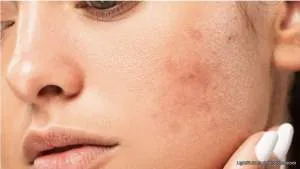(Glam) Skincare is arguably the most important part of your beauty routine, and many of us are in pursuit of the perfect complexion. But how well do you know the formulas behind your favorite products? Despite the popularity of multi-step regimens and maximalist skincare at large, when it comes to the number of products you use, sometimes less is more if you’re looking for clearer skin. That’s not to say that you need a complete overhaul inside your skincare fridge, but you might want to consider taking a closer look at some of the ingredient lists in your arsenal.
Large, complicated skincare routines may also mean you can’t possibly solve which problems are hurting or benefitting you the most. “I have patients who arrive at their initial consultation with a large bag full of products they either use never, sporadically or all at once. Because of that, they can’t tell which one is the problem and those that are actually working for them,” New York City-based Dr. Marnie Nussbaum, M.D., tells Byrdie.
Even those of us who consider ourselves skincare junkies may be uncertain of the true meaning behind two common terms that appear on many product labels: comedogenic and non-comedogenic. While you may have overlooked these two concepts in the past, it’s important to familiarize yourself with them to better understand how to keep your skin healthy.
What is comedogenicity?

So what exactly do comedogenic and non-comedogenic mean? According to Acne.org, you have a higher chance of developing breakouts when using comedogenic products. As you might expect, non-comedogenic products are the opposite; they shouldn’t cause any blemishes. Both terms relate to the possibility of developing “comedones,” or closed pores. Comedogenic ingredients can induce the overproduction of skin cells, leading to unsightly blemishes and blackheads. The origin of comedogenicity comes from a 1972 study in the Journal of the American Academy of Dermatology that explored the link between women who regularly wore makeup and their tendency toward breakouts. If your skin is sensitive or blemish-prone, you should look for skincare and makeup that are labeled non-comedogenic.
There are two things to keep in mind when evaluating the comedogenicity of skincare products. One is that although a product may contain ingredients that are not independently comedogenic themselves when multiple ingredients are combined, they may develop comedogenic properties. Another point to consider is that products containing comedogenic ingredients may not be inherently comedogenic, especially if the offending ingredient is included toward the end of the ingredient list. Ingredients that are listed last are generally used in smaller concentrations than the formula’s other ingredients.
That being said, don’t fret if your holy grail moisturizer contains an ingredient considered to be comedogenic; it doesn’t necessarily mean it will break you out. Everyone’s skin reacts differently to ingredients, and while some are considered riskier than others, you may find you can tolerate comedogenic products or are sensitive to non-comedogenic formulas.






